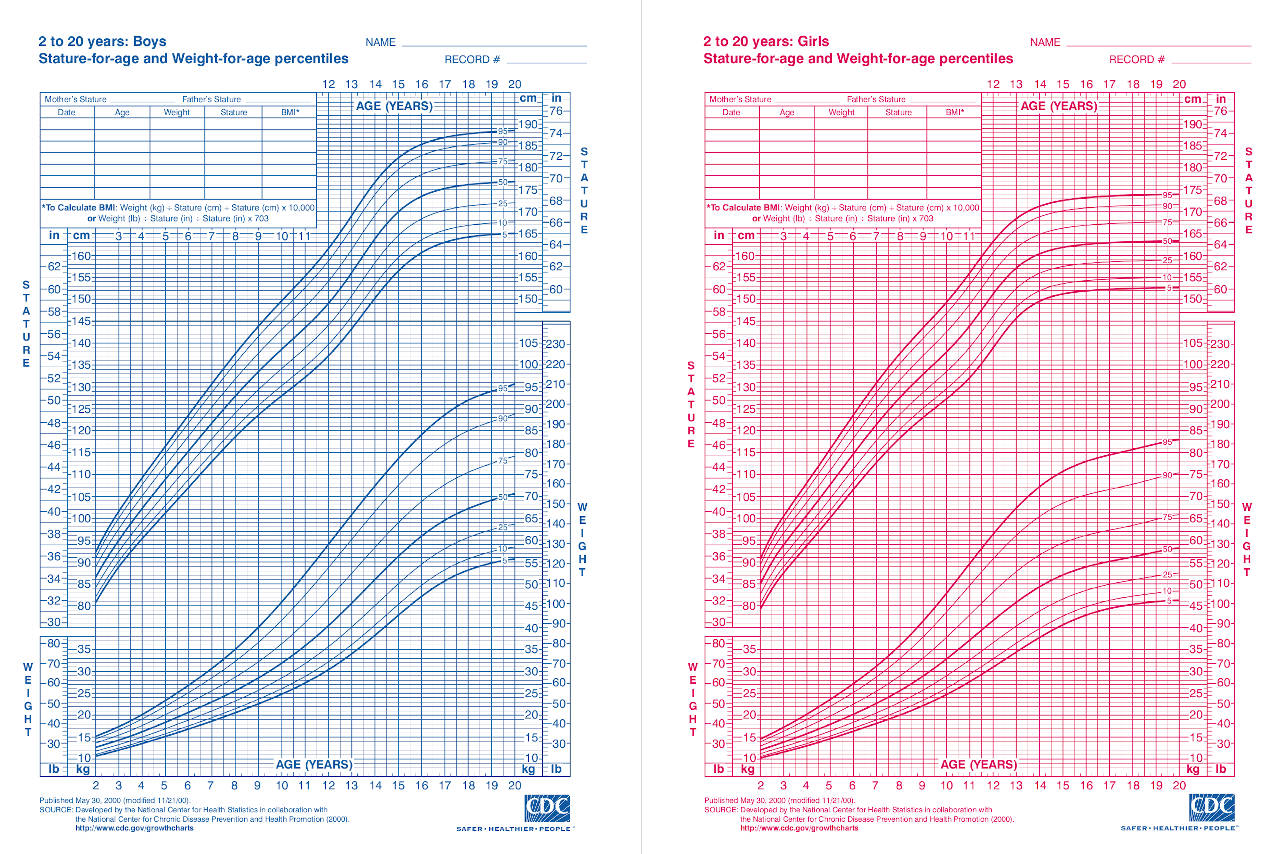Child Weight Percentile Calculator
Calculate your child’s weight percentile for their age group based on the CDC growth chart data.
Results: Child's Weight Percentile
On this page:
How to Find Child Weight Percentile
Similar to determining your child’s height percentile, finding your child’s weight percentile is another way to monitor your child’s development. Your child’s weight percentile is where their weight falls based on their age.
Girls and boys grow at different rates throughout young childhood and adolescence. In addition, weight standards differ with age and sex due to different body structure and hormone fluctuations in males and females.
Children don’t gain weight at a constant rate. Just like with height, their weight will have periods where it does not change much. However, when they hit a “growth spurt” around puberty, their weight often increases at a faster rate.
Therefore, children’s weight percentile charts have been developed to determine how a child’s weight compares to other children of the same age and sex.
These charts, which also combine height for age, are based on data collected from thousands of children all over the world to come up with a standardized weight percentile chart.
The CDC has developed weight for age charts for boys and girls. In addition, there are also weight for stature charts for children 2-5 years of age.[2]

By simply finding the age of your child on the x-axis and then matching it up with the weight (in either pounds or kilograms) on the y-axis, you can see what percentile this corresponds to.
You can also use a child weight percentile calculator above and type in these values to calculate the percentile.
How To Interpret Weight Percentiles For Boys and Girls
As an example, if you have an 8-year-old girl who weighs 90 pounds, she would fall in the 98th percentile. This means that she weighs more than 98% of 8-year-old girls and weighs less than 2% of 8-year-old girls.
Not only are weight percentile charts useful for determining the health of your child at a specific age, but you can also monitor them along these graphs. Children’s weights should follow along their percentile line as they age.
If their weight percentile goes up or down more than two percentile lines, this could be a sign of an underlying health issue and should be discussed with your doctor.
Child BMI
Determining a weight percentile is useful, but in general, BMI percentiles are what is used to diagnose underweight, overweight, and obese children.[5] In fact, The American Academy of Pediatrics recommends using BMI percentiles to screen for overweight and obesity in children beginning as young as two years of age.[6]
The U.S. Preventive Services Task Force (USPSTF) recommends screening children ages six years and older.[7]
To calculate BMI, you divide your child’s current height in kilograms by their height in meters squared. This will give you their BMI.
Just like with the weight percentile chart, you can find your child’s BMI percentile by locating their age on the x-axis and then matching this up with their BMI on the y-axis. This will tell you what percentile this corresponds to.
Alternatively, you can use a child’s BMI percentile calculator.
If your child falls below the 5th percentile, this is considered underweight. If they are in the 5th to 85th percentile, this puts them at a healthy weight. Between the 85th to <95th percentile is considered overweight, while those above the 95th percentile are deemed to be obese.
Together, both weight percentile, height percentile, and BMI percentile charts in children are helpful tools in monitoring your child’s development.
Similar Health Calculators
References
- Centers for Disease Control and Prevention, Data file for the Extended CDC BMI-for-age Growth Charts for Children and Adolescents, https://www.cdc.gov/growthcharts/extended-bmi-data-files.htm
- Centers for Disease Control and Prevention, Clinical Growth Charts, June 16, 2017, https://www.cdc.gov/growthcharts/clinical_charts.htm
- Centers for Disease Control and Prevention, 2 to 20 years: Boys, Stature-for-age and Weight-for-age percentiles, https://www.cdc.gov/growthcharts/data/set1clinical/cj41c021.pdf
- Centers for Disease Control and Prevention, 2 to 20 years: Girls, Stature-for-age and Weight-for-age percentiles, https://www.cdc.gov/growthcharts/data/set1clinical/cj41c022.pdf
- Centers for Disease Control and Prevention, CDC Extended BMI-for-age Growth Charts — Download, https://www.cdc.gov/growthcharts/Extended-BMI-Charts.html
- Centers for Disease Control and Prevention, Evidence-Based Guidelines for Child Obesity, May 7, 2024, https://www.cdc.gov/obesity/child-obesity-strategies/evidence-based-guidelines.html
- US Preventative Services Task Force, Obesity in Children and Adolescents: Screening, June 20, 2017, https://www.uspreventiveservicestaskforce.org/uspstf/document/RecommendationStatementFinal/obesity-in-children-and-adolescents-screening


